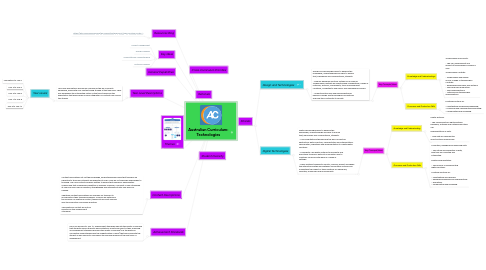
1. Year Level Descriptions
1.1. Year level descriptions provide an overview of the key concepts addressed, along with core content being studied at that year level. They also emphasise the interrelated nature of the two strands and the expectation that planning will involve integration of content from across the strands.
1.1.1. Year Levels
1.1.1.1. Foundation to Year 2
1.1.1.2. Year 3 to Year 4
1.1.1.3. Year 5 to Year 6
1.1.1.4. Year 7 to Year 8
1.1.1.5. Year 9 to Year 10
2. General Capabilities
3. Cross-Curriculum Priorities
4. Rationale
5. Content Descriptions
5.1. Content descriptions set out the knowledge, understanding and skills that teachers are expected to teach and students are expected to learn. They do not prescribe approaches to teaching. The core content has been written to ensure that learning is appropriately ordered and that unnecessary repetition is avoided. However, a concept or skill introduced at one year level may be revisited, strengthened and extended at later year levels as needed. Additional content descriptions are available for teachers to incorporate in their teaching programs. Schools will determine the inclusion of additional content, taking into account learning area time allocation and school priorities. The additional content will not be reflected in the Achievement Standards.
6. Achievement Standards
6.1. From Pre-primary to Year 10, achievement standards indicate the quality of learning that students should typically demonstrate by a particular point in their schooling. An achievement standard describes the quality of learning (e.g. the depth of conceptual understanding and the sophistication of skills) that would indicate the student is well-placed to commence the learning required at the next level of achievement.
7. Student Diversity
8. Key Ideas
8.1. Project Management
8.2. Design Thinking
8.3. Computational Understanding
8.4. Systems Thinking
9. Themes
10. Resources Blog
10.1. https://dtm4260.edublogs.org/wp-admin/edit.php?post_type=post&all_posts=1
11. Strands
11.1. Design and Technologies
11.1.1. Design and Technologies aims to develop the knowledge, understandings and skills to ensure that, individually and collaboratively, students: - Produce designed solutions suitable for a range of Technologies contexts by selecting and manipulating a range of materials, systems, components, tools and equipment creatively, competently and safely; and managing processes; - Understand the roles and responsibilities of people in design and technologies occupations and how they contribute to society.
11.1.1.1. Key Concepts/Ideas
11.1.1.1.1. Knowledge and Understandings
11.1.1.1.2. Processes and Production Skills
11.2. Digital Technologies
11.2.1. Digital Technologies aims to develop the knowledge, understandings and skills to ensure that, individually and collaboratively, students: - Use computational thinking and the key concepts of abstraction; data collection, representation and interpretation; specification, algorithms and implementation to create digital solutions; - Confidently use digital systems to efficiently and effectively transform data into information and to creatively communicate ideas in a range of settings; - Apply systems thinking to monitor, analyse, predict and shape the interactions within and between information systems and understand the impact of these systems on individuals, societies, economies and environments.
11.2.1.1. Key Concepts/Ideas
11.2.1.1.1. Knowledge and Understanding
11.2.1.1.2. Processes and Production Skills
